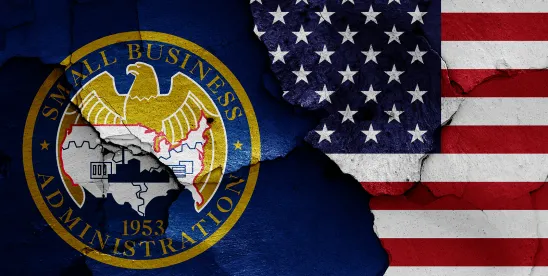In the highly competitive world of federal government contracting, a firm’s small business size or socioeconomic status can determine its eligibility for lucrative set-aside contracts. For competitors and interested parties, the ability to challenge a company’s claimed size or status is a critical tool for ensuring compliance with the Small Business Act and maintaining the integrity of the procurement process. This article provides an overview of how size and status protests and appeals work under Small Business Administration (SBA) regulations.
What Are Size and Status Protests?
A size protest challenges whether a company qualifies as a small business under the SBA’s size standards for a particular procurement.
A status protest, by contrast, challenges a firm’s eligibility for a specific small business program — such as the 8(a) Business Development Program, HUBZone Program, Service-Disabled Veteran-Owned Small Business (SDVOSB) Program, or Women-Owned Small Business (WOSB) Program.
Who Can File a Protest and When?
Size Protests (13 C.F.R. § 121.1001):
- The contracting officer
- Another offeror whom the contracting officer has not eliminated from consideration
- The SBA itself
- The awardee, in limited circumstances (e.g., in a protest of a protest decision)
Status Protests (13 C.F.R. §§ 124.517, 126.801, 127.603):
- The contracting officer
- Other interested offerors
- The SBA or the relevant program office (e.g., the VA Center for Verification and Evaluation for SDVOSB concerns under VA procurements)
Time Limits:
- Generally, a protest must be filed within five business days after notification of the apparent successful offeror (13 C.F.R. §§ 121.1004, 124.517, 126.801(d), 127.603(c)).
What Happens After a Protest Is Filed?
For size protests, the SBA Area Office investigates and issues a formal size determination (13 C.F.R. § 121.1009). The Area Office reviews documents such as tax returns, operating agreements, and contracts to assess issues such as affiliation (13 C.F.R. § 121.103), receipts or employee count (13 C.F.R. § 121.104 and § 121.106), and the applicable size standard based on the NAICS code.
For status protests, the SBA program office (or in some cases, the Office of Hearings and Appeals) investigates the concern’s eligibility for the program in question, often requiring evidence of ownership, control, or principal place of business.
Appealing an Adverse Determination
Size Appeals:
If a party disagrees with the SBA Area Office’s size determination, they may file an appeal with the SBA Office of Hearings and Appeals (OHA) under 13 C.F.R. § 134.302. The appeal must be filed within 15 calendar days after the issuance of the size determination (13 C.F.R. § 134.304(a)).
OHA’s decisions are typically final and binding on all parties. Notably, new evidence is generally not permitted unless it relates to jurisdiction or good cause is shown (13 C.F.R. § 134.308(a)).
Status Appeals:
- For WOSB and SDVOSB programs, appeals of protest decisions may be made to OHA under 13 C.F.R. §§ 127.605 and 128.805.
- For 8(a) status determinations (entry or continuing eligibility), there is limited appealability, primarily involving denials of early graduation or termination (13 C.F.R. § 124.304).
- HUBZone appeals are generally subject to review by OHA.
Strategic Considerations
- Timeliness and Precision – Protests and appeals must be timely and specific. Unsupported or speculative allegations are often dismissed outright.
- Affiliation Rules Are Complex – Many size protests involve nuanced affiliation issues, including common management, ownership, or contractual relationships.
- Interplay with Contract Awards – A sustained protest or appeal can result in the loss of a contract award or the reevaluation of proposals.
- Simultaneous Size/Status Protest and GAO/COFC Protest – Companies are allowed to simultaneously submit size/status protests and traditional protests before the agency, the Government Accountability Office, or the U.S. Court of Federal Claims. Filing simultaneous protests can increase the contractor’s chances of success.
Conclusion
Size and status protests and appeals are vital mechanisms for ensuring only eligible firms receive small business set-aside contracts. Businesses must not only ensure their own compliance but be prepared to challenge competitors when the integrity of a procurement is at stake.





 />i
/>i

